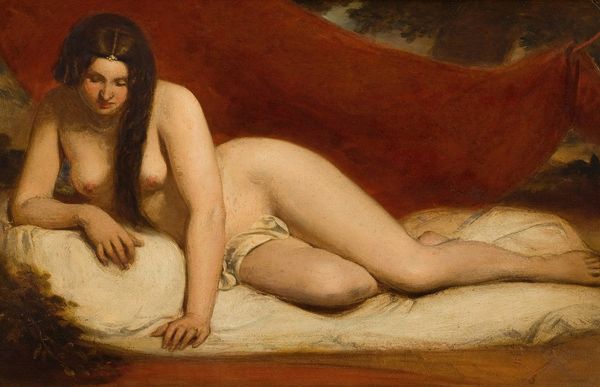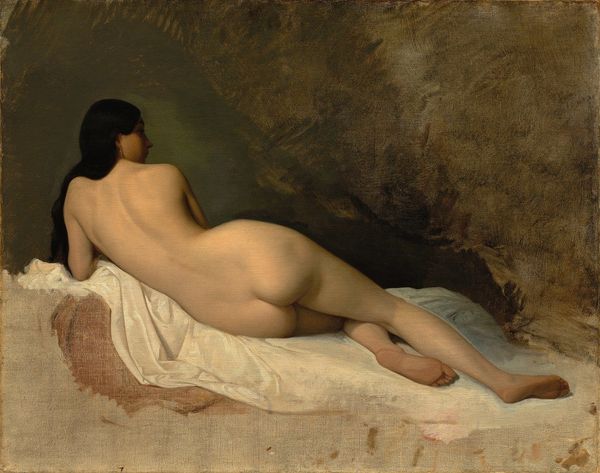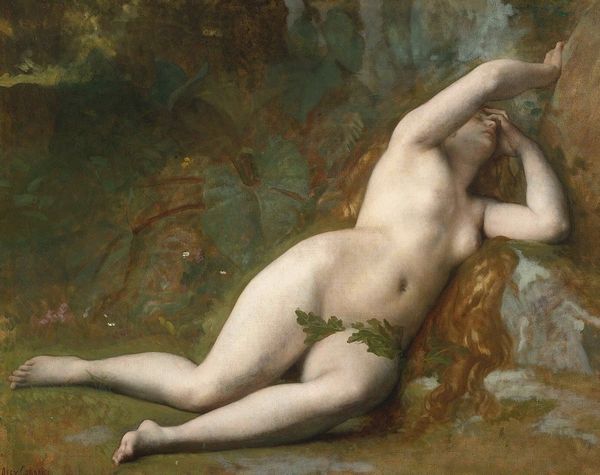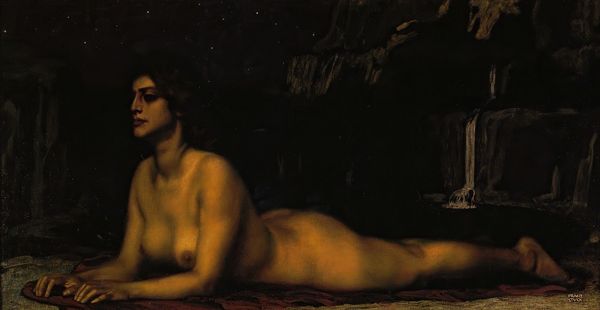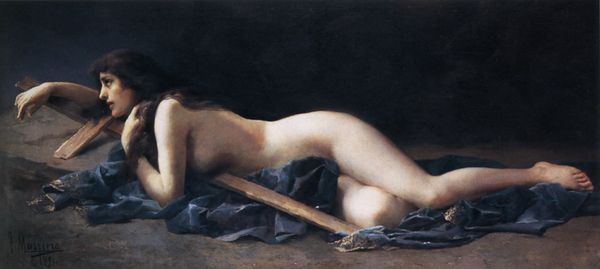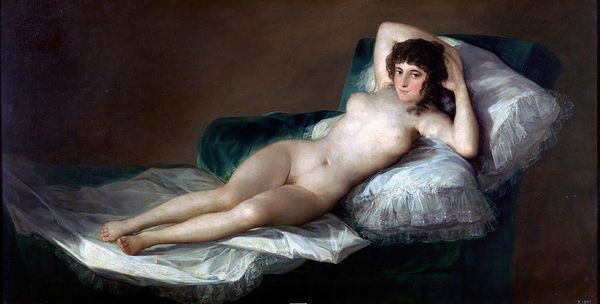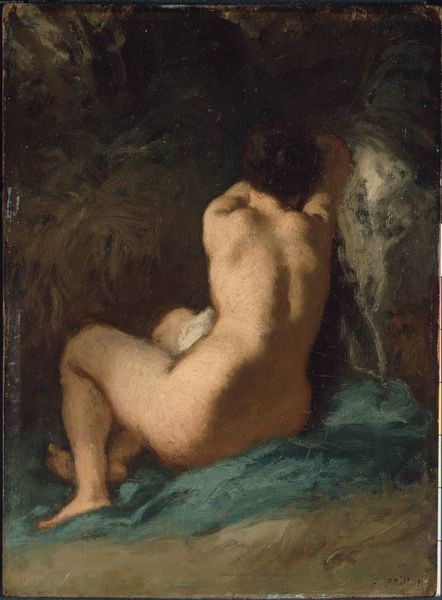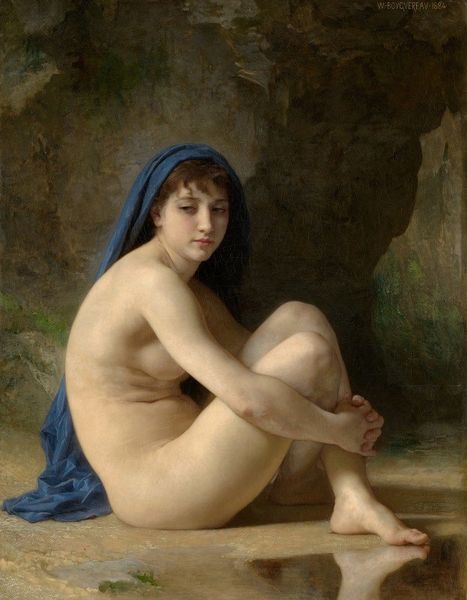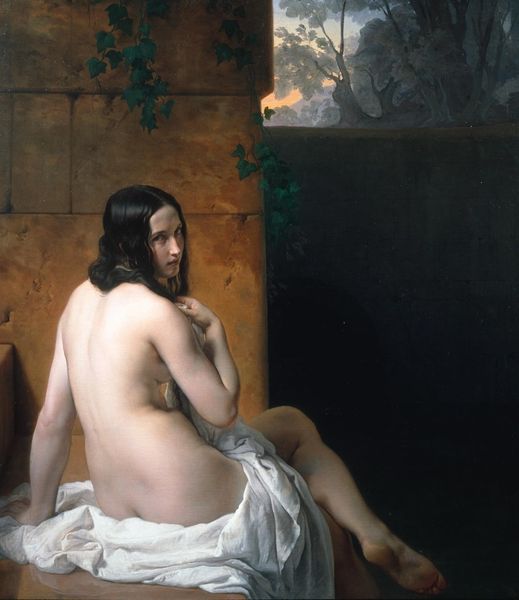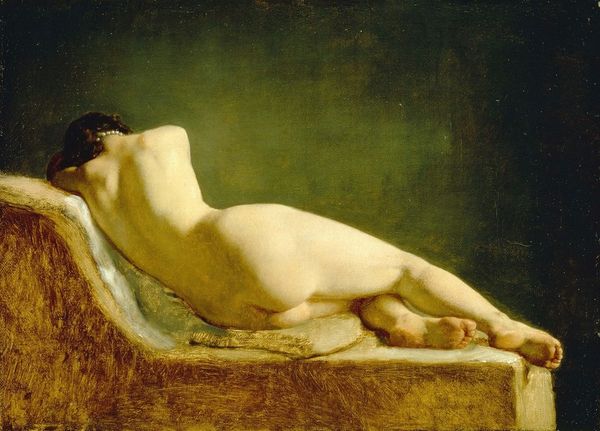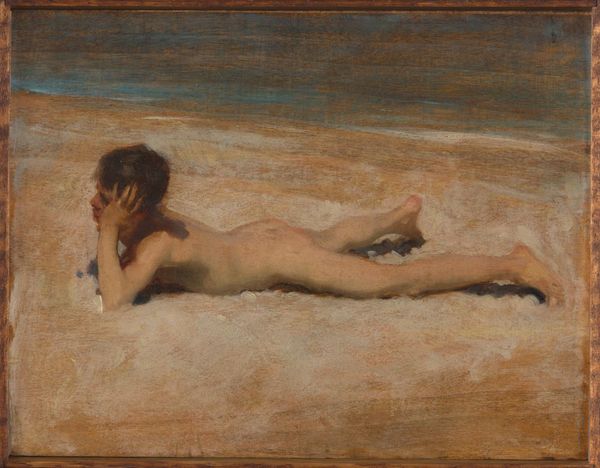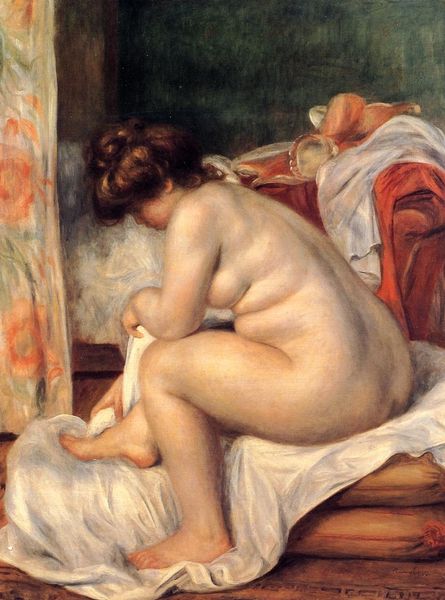
painting, oil-paint
#
painting
#
oil-paint
#
genre-painting
#
academic-art
#
nude
#
realism
Copyright: Public domain
Curator: This is "Nude" painted by Polychronis Lembesis in 1877, executed in oil paint, offering us a glimpse into the academic traditions of its time. It’s interesting to consider the genre of nude portraiture in the context of that era. Editor: My initial response is one of restrained intimacy. The neutral background, combined with her sideways glance, gives a voyeuristic impression. But also a feeling of serenity? Curator: That's interesting. To me, the figure's posture evokes classical sculpture—specifically Venus, but rendered with a stark realism that feels quite modern. There's a distinct echo of artistic lineage, combined with everyday, realistic humanity. How does this intersect with how female bodies were displayed at the time? Editor: Exactly, let's not forget the social climate. How was this nudity perceived then? Were such paintings intended purely as studies, or was there a component of objectification at play for the intended audiences? What narrative is implicit in portraying the gaze directed towards the viewer and the social role of women in the 19th century? Curator: And thinking about the symbolism... The unadorned setting strips away any mythological narrative, focusing purely on the form. The absence of idealization, the soft modelling, implies both vulnerability, but at the same time a very defiant naturalism. Perhaps even pushing against the norms for idealized forms from the art academy? Editor: I see what you mean, yet, is it truly stripped of artifice? I'd argue that the very act of posing, the deliberate control of the body within the frame, complicates that notion of ‘naturalism.' How are we meant to decode the act of viewing itself here, filtered through a male gaze but painted by a male artist? Curator: Precisely, by Lembesis embracing the artistic and cultural expectations regarding gender. "Nude" becomes a testament of these paradigms, not in some defiant rejection of cultural symbols. The natural imperfections humanize her and resonate over time. Editor: The contrast you describe helps me view this work through a more contemporary feminist lens. I am left pondering the subtle power dynamics on display—historical context versus timeless vulnerability and our ever-evolving interpretations of both. Curator: Yes, considering that duality provides another meaningful layer of experiencing the symbols portrayed. Editor: And how our dialogue enriches that! Thanks to art.
Comments
No comments
Be the first to comment and join the conversation on the ultimate creative platform.
